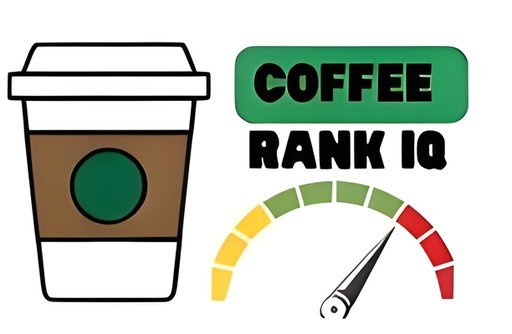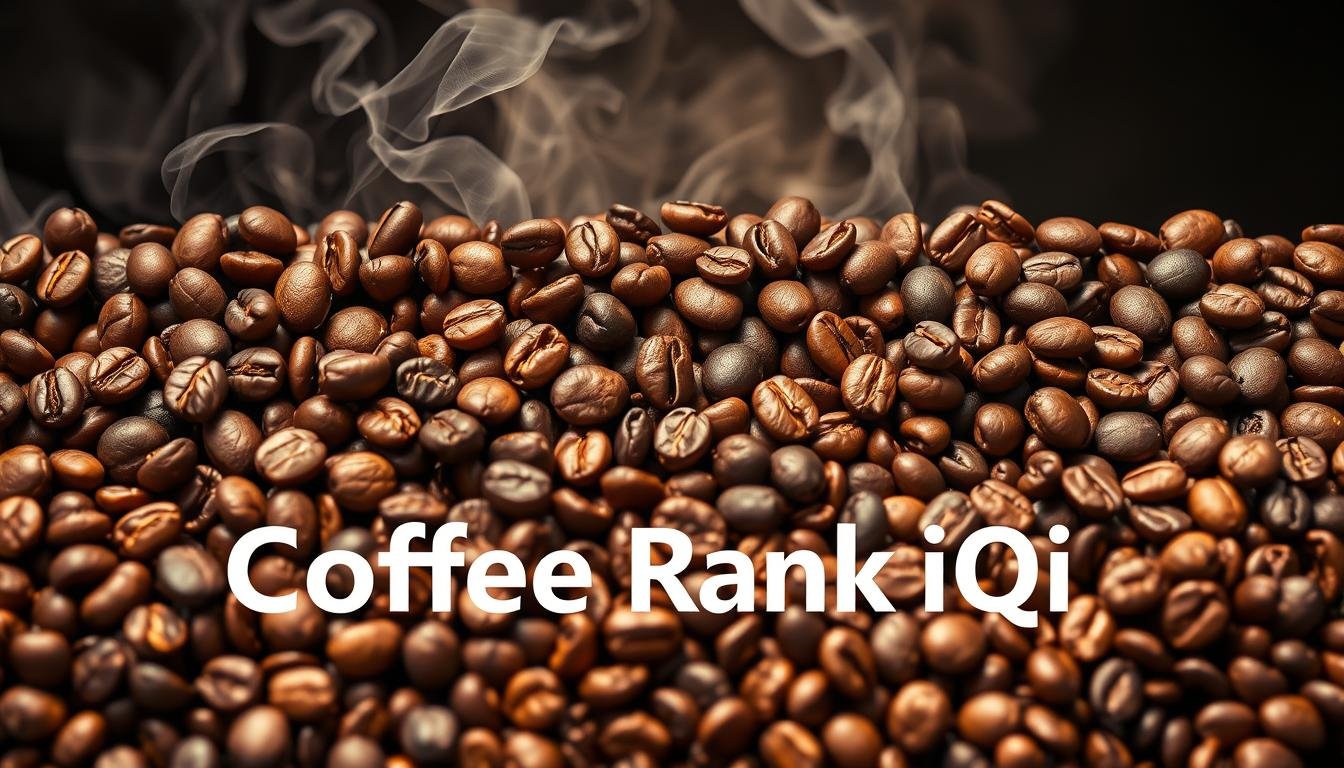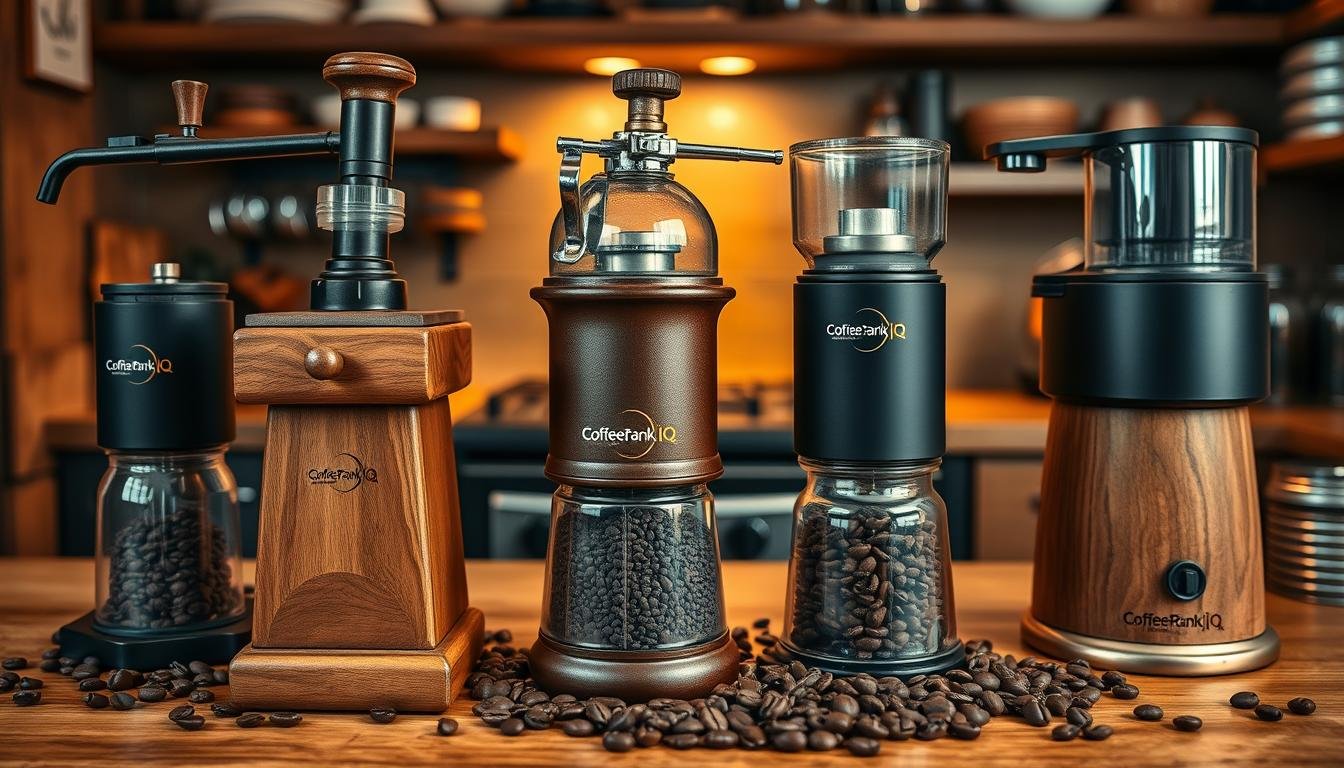Did you know that the Agtron color readings classify coffee roast levels into a staggering range, from Extremely Light (Agtron #91-130) to Very Dark (Agtron #0-30)? This wide spectrum of roast profiles is the key to unlocking the diverse flavors that coffee has to offer. Specialty coffee roasters prioritize maintaining consistent roast quality, using the Agtron system’s infrared reflectance measurements to precisely determine the degree of roast and its correlation with flavor chemistry.
Key Takeaways
- Coffee roast levels can be classified from Very Light (Nordic) to Very Dark (Complete Loss of Terroir)
- Lighter roasts showcase delicate, fruity, and floral notes, while darker roasts impart bittersweet chocolate and smoky characteristics
- Specialty coffee roasters focus on highlighting high-quality coffees without masking their unique terroir flavors
- The Agtron scale helps consumers understand the relationship between roast color, cup characteristics, and terroir expression
- Choosing the right roast level is crucial for appreciating the distinct flavor profiles of coffee
Understanding Coffee Roast Levels
Delving into the world of coffee, you’ll discover that the roasting process plays a crucial role in shaping the flavor profile of your favorite brew. The roast level, akin to a chef’s approach to cooking beef, determines the color, aroma, and taste of the coffee beans. Whether you prefer light, medium, or dark roasts, understanding these distinct roast levels can enhance your overall coffee experience.
What Are Roast Levels?
Roast levels refer to the degree of heat and duration applied to coffee beans during the roasting process. This transformation affects the beans’ physical appearance, chemical composition, and ultimately, the flavors that end up in your cup. From the pale green of unroasted beans to the rich, dark-brown of a French roast, the color of the beans is a key indicator of the roast level.
Light, Medium, and Dark Roast Differences
- Light Roast: Cinnamon-colored beans, exhibiting delicate, fruity, and floral notes.
- Medium Roast: Milk chocolate or hickory-hued beans, showcasing a balanced profile with caramelized and toasted flavors.
- Dark Roast: Almost brown-black in color, dark roast beans impart bittersweet chocolate and smoky characteristics.
These distinct roast levels are achieved by carefully controlling the temperature and duration of the roasting process. The transformation of the coffee bean’s color, aroma, and taste is a testament to the artistry and precision of the roaster.
| Roast Level | Bean Color | Flavor Profile |
|---|---|---|
| Light Roast | Cinnamon | Delicate, fruity, floral |
| Medium Roast | Milk chocolate, hickory | Balanced, caramelized, toasted |
| Dark Roast | Brown-black | Bittersweet chocolate, smoky |
By understanding the nuances of coffee roast levels, you can better appreciate the diverse flavors and aromas that each level offers, ultimately helping you find the perfect roast to suit your personal taste preferences.
The Roasting Process and Flavor Development
The coffee roasting process is the key to unlocking the captivating flavors and aromas within coffee beans. Each roast level – light, medium, and dark – imparts distinct characteristics that cater to diverse taste preferences.
Light Roast Flavors
Light roast coffee is renowned for its bright, crisp acidity, delicate body, and nuanced flavors. The mild roasting process allows the coffee’s origin and processing method to shine, often presenting notes of citrus, cranberry, or even herbal tea. These light roasts are the perfect choice for brewing methods like pour-over, Aeropress, and cold brew, where the distinct flavors can truly be savored.
Medium Roast Characteristics
Medium roast coffee offers a more rounded and substantial flavor profile. The subdued acidity and increased sweetness result in flavors of brown sugar, milk chocolate, and toffee. This balanced roast is a versatile choice, complementing a wide range of brewing methods, from drip coffee makers to French press and espresso machines.
Dark Roast Intensity
Dark roast coffee imparts a heavier body, lower acidity, and bold flavors such as chocolate, pipe tobacco, and dried cherries. The roasting process plays a more prominent role in shaping the taste, often overshadowing the coffee’s origin characteristics. Dark roasts shine in brewing methods like espresso, Moka pot, and Turkish coffee, where their intense flavors can be fully expressed.
Throughout the coffee roasting process, the Maillard reaction and caramelization take place, transforming the beans and profoundly impacting the roast degree impact on the final flavor profile. Understanding these nuances allows coffee enthusiasts to select the perfect roast level to suit their individual taste preferences.
Agtron and SCAA Roast Classification System
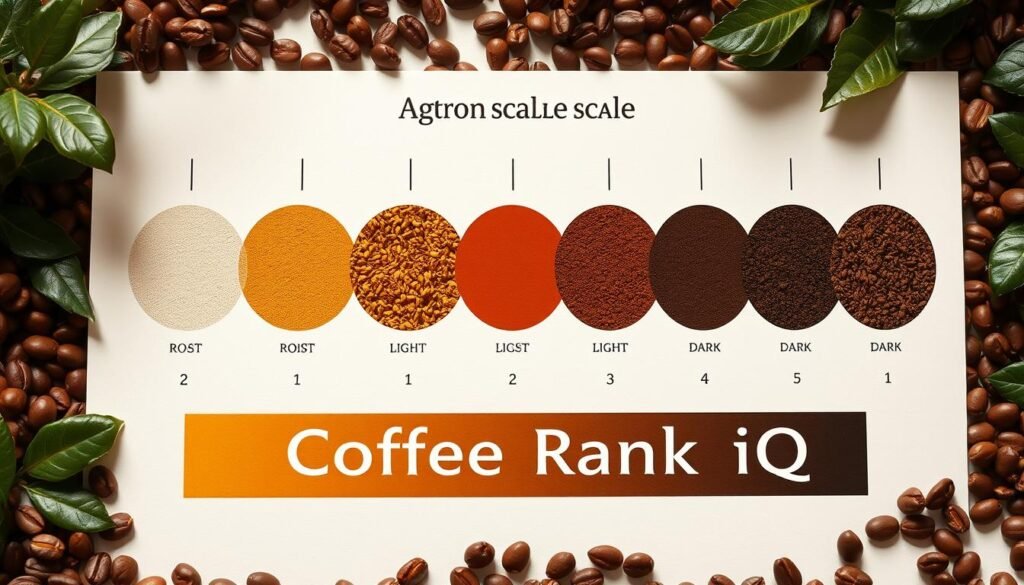
In the specialty coffee industry, the Agtron and SCAA (Specialty Coffee Association of America) Roast Classification system has emerged as a reliable way to standardize and communicate coffee roast levels. This system provides a numerical index that correlates with the degree of roast and the associated flavor chemistry.
The Agtron scale, which ranges from 0 to 130, serves as a more objective measure of roast level. The higher the Agtron number, the lighter the roast, with Extremely Light roasts falling between 91-130 and Very Dark roasts ranging from 0-30. This quantitative approach helps specialty coffee roasters ensure quality control and showcase the unique terroir of their beans.
| Roast Level | Agtron # |
|---|---|
| Extremely Light | 91–130 |
| Very Light | 81–90 |
| Medium Light | 71–80 |
| Medium | 51–60 |
| Moderately Dark | 41–50 |
| Very Dark | 0–30 |
The SCAA Roast Classification system further refines these roast levels, with categories such as Very Light (Nordic), Light Medium, Medium, Specialty Dark, Dark (Loss of Terroir), and Very Dark (Complete Loss of Terroir). This comprehensive approach helps consumers and industry professionals alike understand the impact of roasting on the final flavor profile of the coffee.
By utilizing the Agtron scale and SCAA roast classification, specialty coffee roasters can ensure that their roasts consistently align with the desired flavor characteristics and origin attributes, providing their customers with a reliable and consistent experience.
Understanding the Different Coffee Roast Levels and Their Flavors
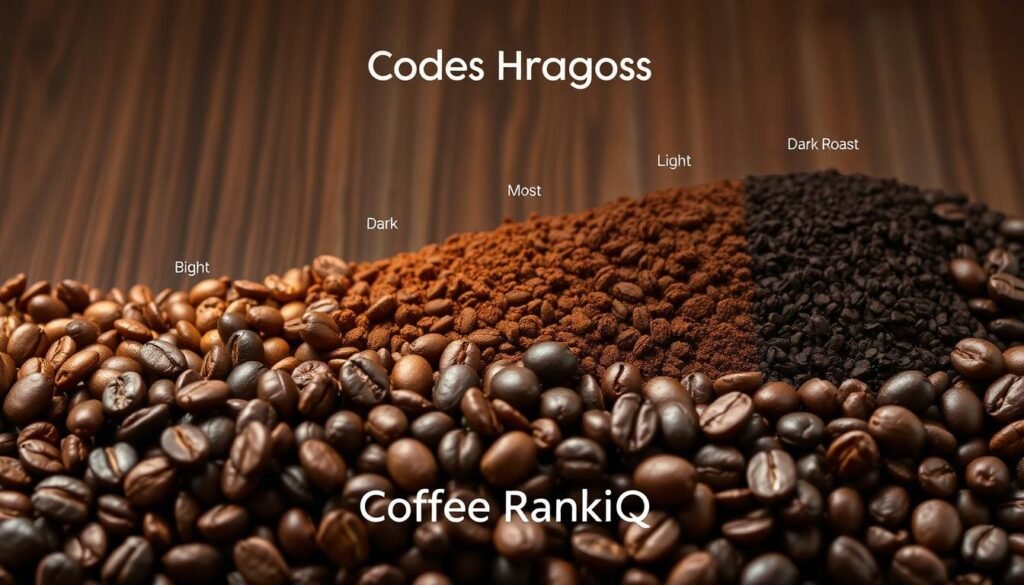
The flavor profile of a coffee is a delicate interplay between various factors, including the coffee variety, growing conditions, processing method, and, importantly, the roasting process. While the roast level alone doesn’t tell the whole story, it can provide valuable insights into the flavors you can expect from a particular coffee.
Light roasts are known for their delicate, fruity, and floral flavor notes, often described as tasting like lightly toasted nuts, honey, or freshly baked bread. These coffees retain more of the coffee’s natural acidity and aroma, offering a complex and nuanced drinking experience.
Medium roasts, on the other hand, typically showcase richer, more caramelized flavors, such as toasted nuts, milk chocolate, and subtle fruit notes like plum or peach. These coffees strike a balance between the brightness of light roasts and the intensity of dark roasts.
At the darker end of the spectrum, dark roasts often present bittersweet chocolate notes and drier, nuttier flavors like walnut or pecan. While they may exhibit fewer fruity or floral characteristics, dark roasts are prized for their bold, intense, and sometimes smoky profile.
Specialty coffee roasters strive to showcase the unique terroir and origin characteristics of their coffees, with the roasting process playing a supporting role in highlighting these distinct qualities. By understanding the flavor profiles associated with different roast levels, coffee enthusiasts can better navigate the vast world of specialty coffee and find the perfect roast to suit their personal preferences.
| Roast Level | Flavor Characteristics | Acidity | Body | Sweetness |
|---|---|---|---|---|
| Light | Delicate, fruity, floral, nutty, honey | High | Light | Mild |
| Medium | Caramelized, toasted nuts, milk chocolate, subtle fruit | Mild | Medium | Balanced |
| Dark | Bittersweet chocolate, dry, nutty, smoky | Low | Heavy | Low |
“Understanding the nuances of coffee roast levels is key to discovering the flavors that truly resonate with your personal taste preferences.”
Choosing the Right Roast Level
When it comes to selecting the perfect coffee, understanding the nuances of roast levels is key. Your personal taste preferences and brewing method should guide your choice, as each roast level offers its own unique flavor profile.
Considering Your Taste Preferences
If you’re drawn to delicate, fruity, and floral flavors, a light roast may be the ideal match. These coffees often have a tea-like quality, with notes of cereal, lightly toasted nuts, honey, or freshly baked bread. On the other hand, if you prefer caramelized and toasted notes, a medium roast may be more to your liking, offering flavors of milk chocolate, plum, and peach.
For those who enjoy bittersweet chocolate and smoky characteristics, a dark roast may be the way to go. These bold, intense coffees feature flavors of walnut, pecan, and dry, roasted nuts.
Brewing Method and Roast Level
The brewing method you choose can also impact the suitability of a particular roast level. Lighter roasts may lose some of their delicate nuances when added to milk or sugar, while darker roasts pair exceptionally well with these additions. Experiment with different roast levels and brewing methods to discover the perfect coffee that suits your taste buds.
Ultimately, choosing the right coffee roast level is a matter of personal preference. By considering your taste preferences and brewing method, you can explore the vast and flavorful world of coffee, finding the perfect roast to savor and enjoy.
The Impact of Roasting on Caffeine Content
When it comes to coffee, one of the common questions that arises is whether light or dark roasts contain more caffeine. While the roasting process can impact various aspects of coffee, including flavor and aroma, the effect on caffeine content is relatively minor.
Studies have shown that light-roasted coffee generally contains slightly more caffeine than dark-roasted coffee. This is due to the fact that during the roasting process, some of the caffeine is lost, but the overall difference is relatively small.
However, other factors can also play a role in the caffeine content of your coffee. The coffee variety, such as Arabica or Robusta, can significantly impact the caffeine levels. Arabica coffees, which are generally considered higher quality, contain less caffeine than Robusta varieties.
Additionally, the brewing method and grind size can affect the amount of caffeine extracted. Finer grinds and longer brew times tend to result in higher caffeine extraction, regardless of the roast level.
| Roast Level | Caffeine Content (8-oz cup) |
|---|---|
| Light Roast | 91 mg |
| Medium Roast | 90 mg |
| Dark Roast | 88 mg |
| MOAB (100% Robusta) | 200 mg |
It’s important to note that the recommended daily limit for caffeine intake is around 400 mg, which is equivalent to approximately four 8-ounce cups of brewed coffee. Consuming too much caffeine can lead to side effects like insomnia, nervousness, or a rapid heartbeat.
In conclusion, while the roasting process can impact various aspects of coffee, the effect on caffeine content is relatively minor. Other factors, such as the coffee variety and brewing method, play a more significant role in determining the overall caffeine experience.
Conclusion
Exploring the diverse world of coffee roast levels is a captivating journey that enhances your appreciation for the complexities of this beloved beverage. From the delicate, fruity notes of light roasts to the bittersweet, smoky characteristics of dark roasts, each roast profile offers a unique sensory experience. By understanding coffee roast level overview and understanding coffee roast profiles, you can discover the perfect roast to suit your personal taste preferences and brewing method.
Whether you’re a specialty coffee enthusiast or simply enjoy a reliable daily brew, diving into the nuances of roast levels can deepen your coffee knowledge and elevate your overall enjoyment. By choosing the right coffee roast that aligns with your taste buds and brewing techniques, you can unlock a world of flavor and aroma that will leave you craving more.
As you continue on your coffee exploration journey, remember that the art of roasting is a delicate balance, where the skill and experience of the roaster play a crucial role. Embrace the diversity of coffee roasts and let your senses guide you to the perfect cup that will tantalize your palate and bring you closer to the essence of this captivating beverage.
FAQ
What are the different coffee roast levels?
Coffee roast levels can be described on a scale of light, medium, and dark. The roast level is determined by the bean type, the amount of heat the beans are exposed to, and the length of time they’re in the roaster.
How do the different roast levels impact the flavor of coffee?
The different roast levels result in distinct flavor profiles. Light roasts showcase delicate, fruity, and floral notes, medium roasts exhibit more caramelized and toasted flavors, and dark roasts impart bittersweet chocolate and smoky characteristics.
What is the Agtron and SCAA Roast Classification system?
The specialty coffee industry has established the Agtron and SCAA Roast Classification system to create a numerical index and standardized roast levels to ensure quality control and showcase the terroir of their coffees.
How do personal taste preferences and brewing methods affect the choice of coffee roast level?
When choosing a coffee roast level, it’s important to consider your personal taste preferences and how you plan to brew the coffee. Lighter roasts may suit those who enjoy delicate, fruity, and floral flavors, while darker roasts pair well with additions like milk or sugar.
Does the roast level affect the caffeine content in coffee?
Studies have shown that lighter-roasted coffee generally contains slightly more caffeine than darker-roasted coffee. However, the difference is relatively minimal, and other factors, such as the coffee variety and brewing method, can also impact the final caffeine content.
